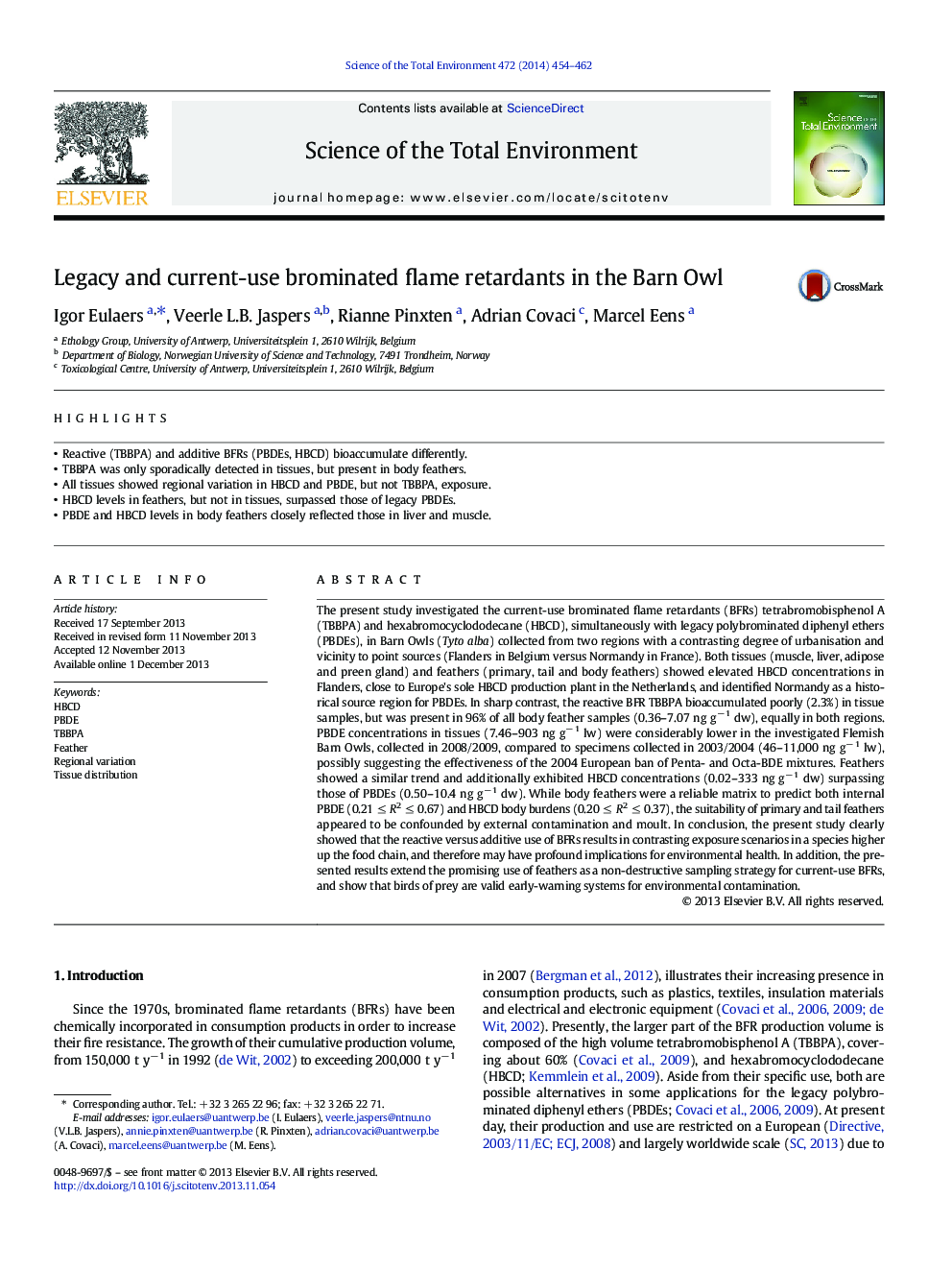| کد مقاله | کد نشریه | سال انتشار | مقاله انگلیسی | نسخه تمام متن |
|---|---|---|---|---|
| 6331164 | 1619792 | 2014 | 9 صفحه PDF | دانلود رایگان |
عنوان انگلیسی مقاله ISI
Legacy and current-use brominated flame retardants in the Barn Owl
دانلود مقاله + سفارش ترجمه
دانلود مقاله ISI انگلیسی
رایگان برای ایرانیان
کلمات کلیدی
موضوعات مرتبط
علوم زیستی و بیوفناوری
علوم محیط زیست
شیمی زیست محیطی
پیش نمایش صفحه اول مقاله

چکیده انگلیسی
The present study investigated the current-use brominated flame retardants (BFRs) tetrabromobisphenol A (TBBPA) and hexabromocyclododecane (HBCD), simultaneously with legacy polybrominated diphenyl ethers (PBDEs), in Barn Owls (Tyto alba) collected from two regions with a contrasting degree of urbanisation and vicinity to point sources (Flanders in Belgium versus Normandy in France). Both tissues (muscle, liver, adipose and preen gland) and feathers (primary, tail and body feathers) showed elevated HBCD concentrations in Flanders, close to Europe's sole HBCD production plant in the Netherlands, and identified Normandy as a historical source region for PBDEs. In sharp contrast, the reactive BFR TBBPA bioaccumulated poorly (2.3%) in tissue samples, but was present in 96% of all body feather samples (0.36-7.07 ng gâ 1 dw), equally in both regions. PBDE concentrations in tissues (7.46-903 ng gâ 1 lw) were considerably lower in the investigated Flemish Barn Owls, collected in 2008/2009, compared to specimens collected in 2003/2004 (46-11,000 ng gâ 1 lw), possibly suggesting the effectiveness of the 2004 European ban of Penta- and Octa-BDE mixtures. Feathers showed a similar trend and additionally exhibited HBCD concentrations (0.02-333 ng gâ 1 dw) surpassing those of PBDEs (0.50-10.4 ng gâ 1 dw). While body feathers were a reliable matrix to predict both internal PBDE (0.21 â¤Â R2 â¤Â 0.67) and HBCD body burdens (0.20 â¤Â R2 â¤Â 0.37), the suitability of primary and tail feathers appeared to be confounded by external contamination and moult. In conclusion, the present study clearly showed that the reactive versus additive use of BFRs results in contrasting exposure scenarios in a species higher up the food chain, and therefore may have profound implications for environmental health. In addition, the presented results extend the promising use of feathers as a non-destructive sampling strategy for current-use BFRs, and show that birds of prey are valid early-warning systems for environmental contamination.
ناشر
Database: Elsevier - ScienceDirect (ساینس دایرکت)
Journal: Science of The Total Environment - Volume 472, 15 February 2014, Pages 454-462
Journal: Science of The Total Environment - Volume 472, 15 February 2014, Pages 454-462
نویسندگان
Igor Eulaers, Veerle L.B. Jaspers, Rianne Pinxten, Adrian Covaci, Marcel Eens,